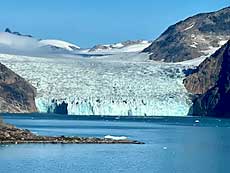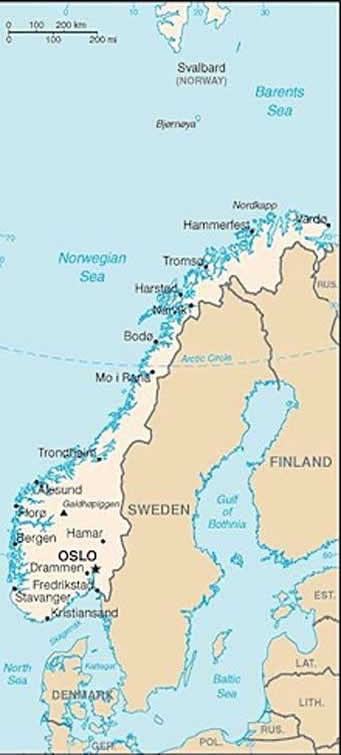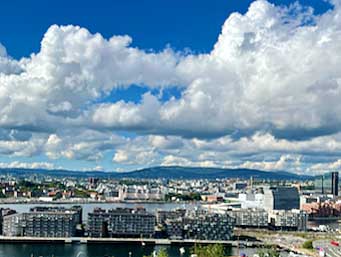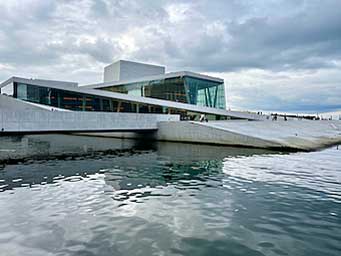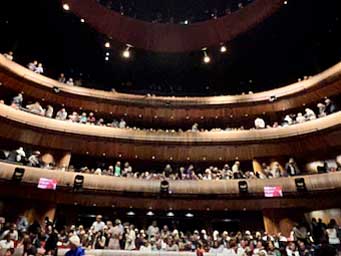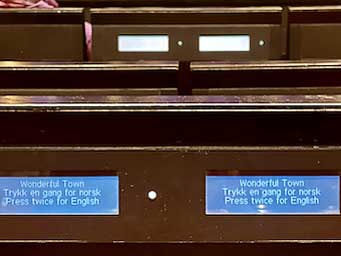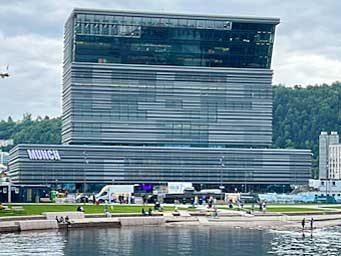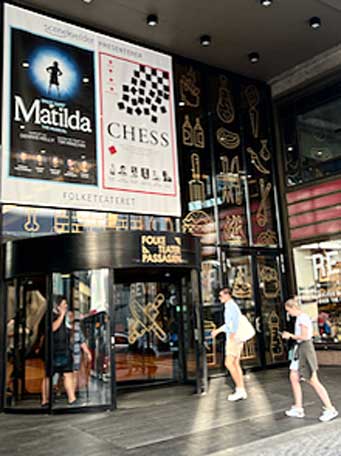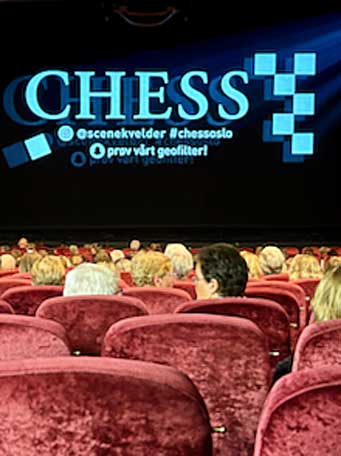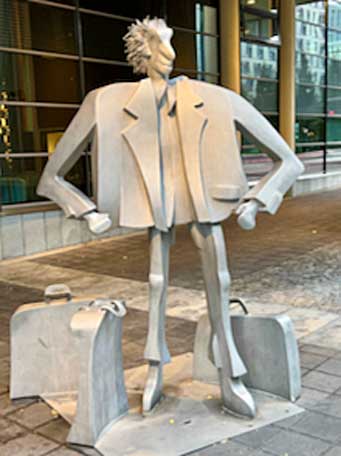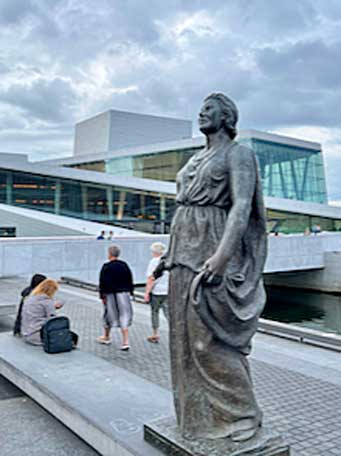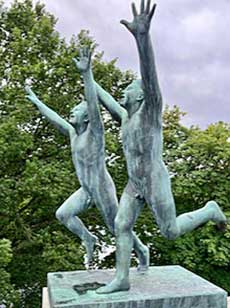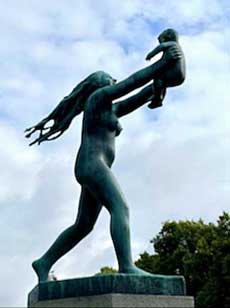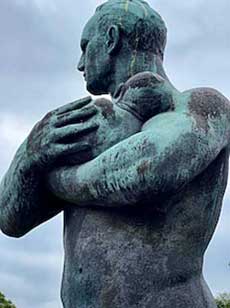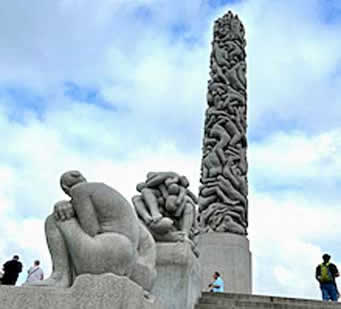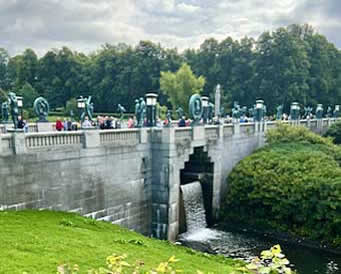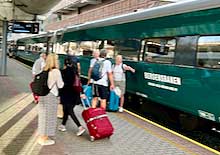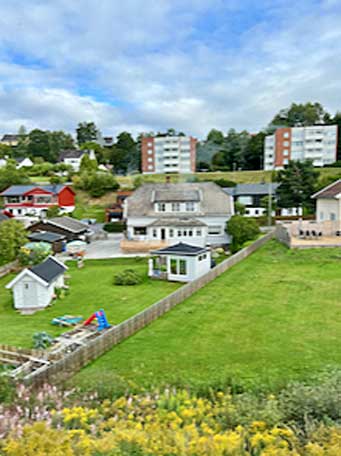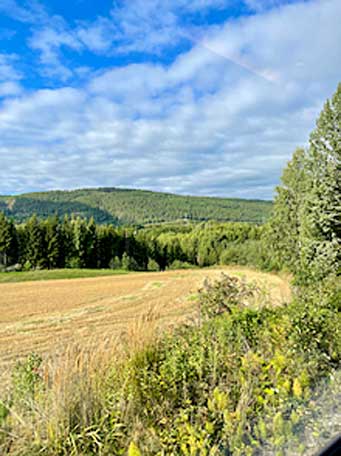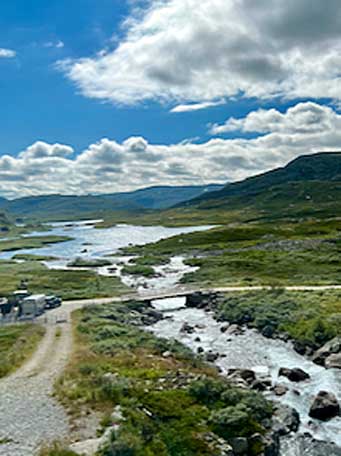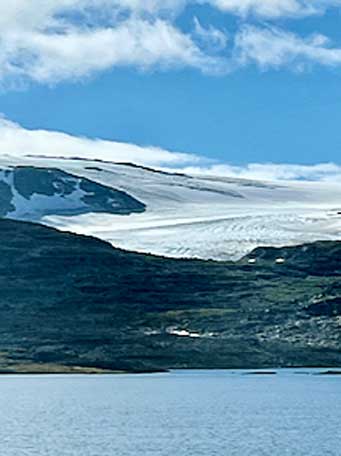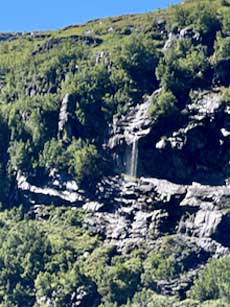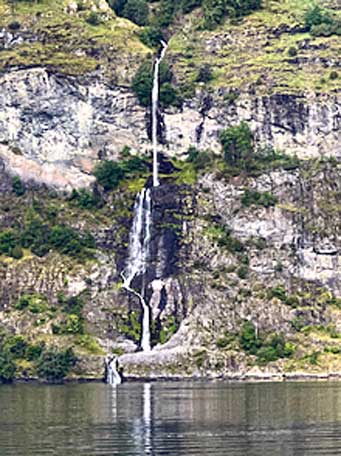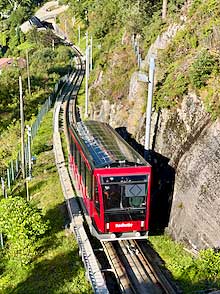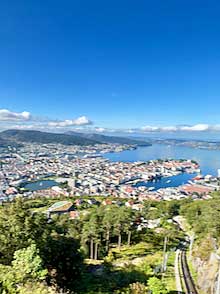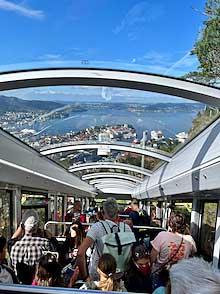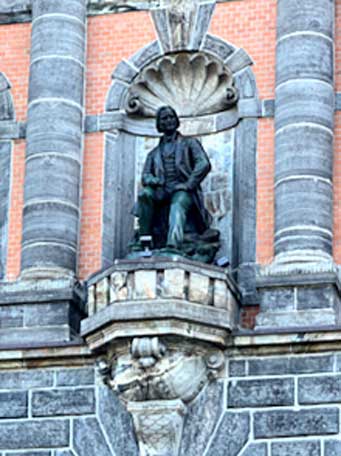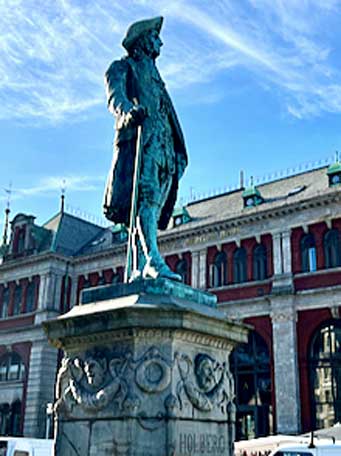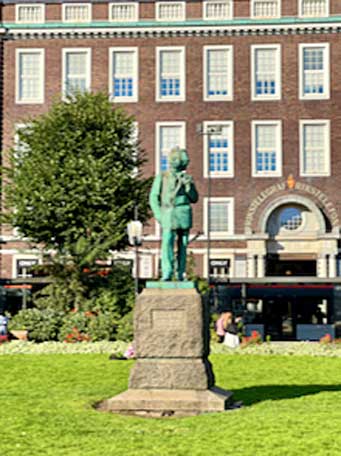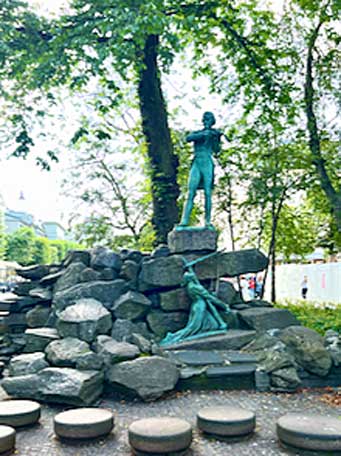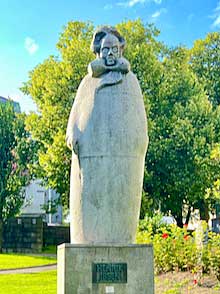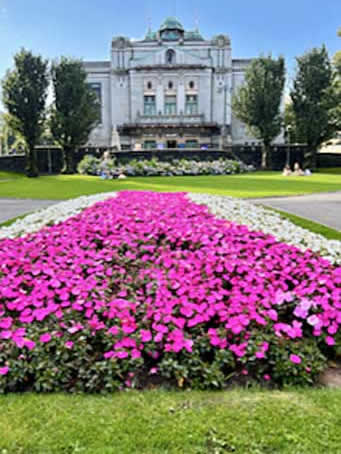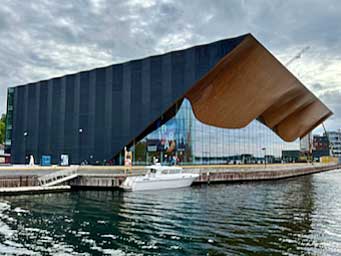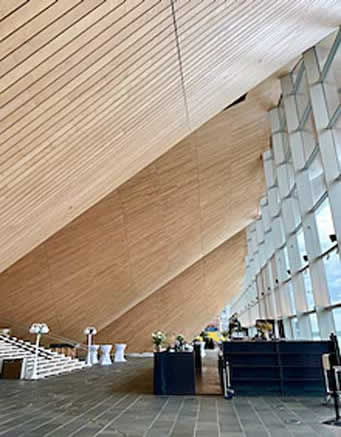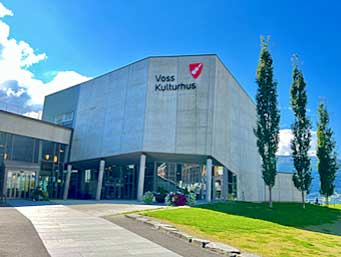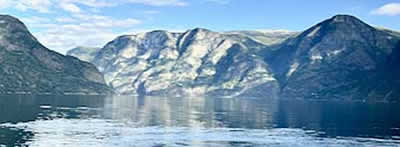 |
|
THE ARCTIC ARC — PART 1 |
|||
Checking Out Norway |
|||
Story and photos by Brad Hathaway |
Believe it or not, there’s more to fascinate and thrill in Norway, Iceland and Greenland—what I call “The Arctic Arc”—than just waterfalls, glaciers and fjords.These three countries share a common history starting with the Vikings nearly twelve centuries ago. Even their names come down from the Viking view of the world. The name “Viking” is a derivative of the Norwegian word “vik” meaning someone who came from the fjords. And, famously, it was the Viking desire to discourage people from coming to the lovely green land they had settled that made them call it “Iceland”—while they didn’t mind if settlers tried to find spots not covered by the ice shelf of the larger ice-covered island, so they called it “Greenland.” At least, that’s the favorite version of the story—there’s no real proof of the who and why for the first naming of these lands. We’ll spend the next two issues delving into the customs, cultures and geography of this “Arctic Arc” — First up? Norway.
After World War II the country regained independent autonomy as the Kingdom of Norway, with a great reverence and affection for their sovereign, King Harald V, then in the 32nd year of his reign. After World War II Norway joined NATO, but chose not to join the European Union. The presence of vast deposits of oil and gas under the waters over Norway’s Continental Shelf, which began to be developed in the 1960s, has proven to be a huge source of wealth, especially as almost all of it is exported. Norway has more electric cars per capita than any other nation and it meets over 90 percent of its own domestic electricity needs from falling water: hydro. You will, perhaps, hear from a tour guide that Norway went from being a poor country (one guide told us “the poorest country in Europe”) to one of the richest with the discovery of North Sea Oil. Not actually true. In fact, Norway has been one of the richest countries in Europe for a long, long time. This was not just because of its early and often dominant development as a maritime power. The Vikings had their golden age in the 8th, 9th and 10th centuries. Through the middle ages, however, Norway built on its maritime strengths to become a major player in Europe’s economy, reaching something of a peak in the 13th and 14th centuries. Modern Norway’s wealth wasn’t so much dependent on maritime power itself as it was a result of the investments the riches from maritime trade allowed in cultural, educational and institutional structures. Today, Norway’s Government Pension Fund with some $1.4 trillion in investments is considered the second-largest single owner after Japan in the world’s stock markets according to the “Thinking Ahead Institute.”
We began our Arctic Arc tour in Norway’s capital city, Oslo—a thriving, bustling metropolis of about a million Norse. Here’s a treasure trove of cultural activities ranging from performing arts to fine arts. Our first taste of the town was at the opera. One of the finest modern opera houses, this harbor-side structure was designed by the Norwegian architecture firm of Snøhetta. Seating for over 1,300 patrons features small text screens built into the seat-backs in order to provide translations when the opera isn’t in Norwegian—which is most of the time.
That was certainly the case when we were there. We attended a spirited performance of Leonard Bernstein’s score from the Broadway musical “Wonderful Town” where the narration was in Norwegian but the lyrics (by Betty Comden and Adolph Green) were sung untranslated in English. Conductor Karen Kamensek had the orchestra swinging and the audience on its feet clapping along.
Oslo’s Folkteateret offers musical productions, many are Broadway or London musicals translated into Norwegian. The night I attended, a sold-out audience enjoyed a thoroughly satisfying professional production of the musical “Chess” with music by ABBA’s Benny Andersson and Björn Ulvaeus with the lyrics by Ulvaeus and Tim Rice in a Norwegian translation.
The performing arts aren’t all that is offered in Norway’s capital. This country, so far north that the winters are dark most of the day, has developed a love of the warmth and light out of doors during the other half of the year. As a result, public art abounds ranging from tributary, such as the statue of famed opera singer Kirsten Flagstad that stands before the opera house, to the whimsical such as the cartoonish statue of a traveler with his bags in front of one of the hotels. The grand joining of the outdoors with sculpture, however, is Vigeland Park, the life’s work of Norway’s best known sculptor, Gustav Vigeland. He devoted the last two decades of his life to creating an astonishing display of nearly 600 figures—each distinct and individual, celebrating human life from infancy to aged, male and female, all naked in celebration of life. Vigeland formed his sculptures in clay and his studio staff cast them in bronze or duplicated them in stone. Here’s a sampling:
Vigeland also acted as the landscape architect for the huge sculpture garden, assuring proper placement of the pieces including the “Monolith,”—a 45-foot-high obelisk of over 100 human figures, and “The Bridge” which provides a setting for 58 of Vigeland’s sculptures.
Most people visit Norway to see the absolutely gorgeous scenery nature has provided. We certainly didn’t ignore this aspect of Norway’s attraction. Not on your life.
The train made one stop so we could step out and get a close up view of one of South Norway’s most impressive waterfalls, Kjosfossen. We were so close we got drenched from the spray!
In the village of Flåm we boarded one of the more amazing vessels we’ve encountered-a fully electric, zero emission, carbon-fiber ship that carries 400 passengers on a silent cruise through the Aurlandsfjord and the Nærøyfjord, through 20 miles of the most gorgeous scenery imaginable.
Then it was back on the train to Bergen on Norway’s west coast. At nearly 300,000 population, it is Norway’s second largest city and offers both old and new pleasures. Remember that Bergen was actually Norway’s capital city in the 13th Century. Today you can join the crowd of tourists to stroll through the old town and get a feel for what it must have been like “in the olden days” . . . but be aware that the wooden structures there aren’t all that old. They date primarily from the rebuilding after a disastrous fire in 1702.
To get a feel for the modern Bergen, take the fløibanen, a funicular, to the top of 1,000 foot Mount Fløyen where you'll have a spectacular view of the city including the large lake and fountain that mark the open spaces of the City Park, or “Byparken.”
One very new item on view at the top was a milepost showing the distance to such places as Cape Town, The North Pole and Istanbul. The latest addition showed the distance to Kyiv, in the national Ukrainian colors of yellow and blue!
Like Oslo, Bergen abounds with outdoor sculpture, much of it depicting cultural icons of Norway. Romantic painter Johan Christian Claussen Dahl sits over the entry to the Bergen Art Museum which is known as KODE. Author Ludvig Holberg overlooks the harbor. Composer Edvard Grieg stands in the lovely Byparken, while international violin sensation (circa the 1870s and 80s) Ole Bull, is depicted plying his art above what was billed as “an eternal waterfall” but which has been turned off due to drought conditions.
Speaking of the National Theater, here’s the pinnacle of the theater community of the city as well as the nation. The building dates back to 1899, but the theater company that performs there dates further back seventy years. Plays by both Holberg and Ibsen debuted here, in a building designed by Ole Bull’s architect nephew Henrik Bull. Playing there when we were in Bergen was their production of the musical “Lazarus” by David Bowie and Enda Walsh. They performed the text in a translation into Norwegian, but sang the songs with their original English lyrics.
Designed by the Finnish firm ALA Architects and their Norwegian counterparts, SMS Arkitekter, the facility is home to a theater company, a symphony orchestra and a full opera company. Its interior is as striking as its exterior. Even as small a city as Voss (the 77th most populous municipality with a population of just over 15,000) has its own Kulturhus with a 432 seat hall that can be a cinema (with digital 3D projection) or a concert hall. It was designed by Per Knudsen.
Join us next edition to carry on to Iceland and Greenland as we continue to explore the Arctic Arc. ABOUT THE AUTHOR
|

